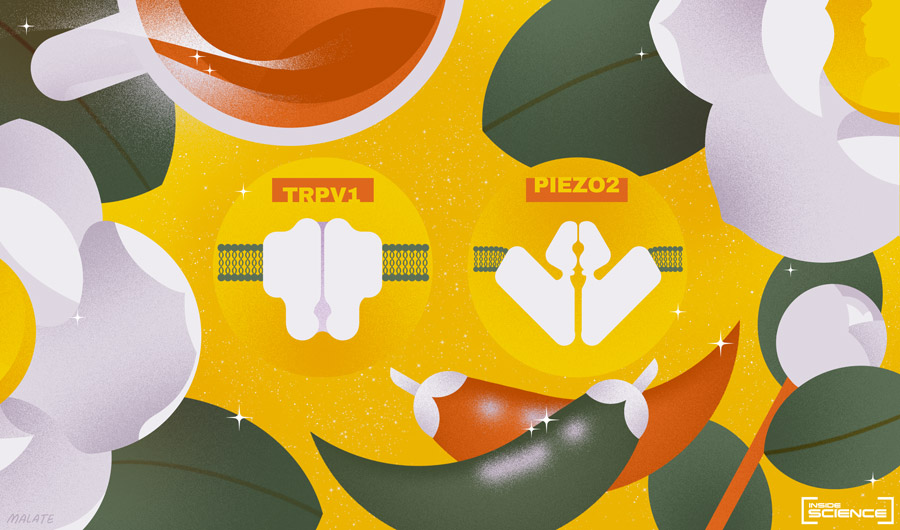2 Share Medicine Nobel for Discovering Receptors for Touch and Temperature

Copyright American Institute of Physics
(Inside Science) -- The first Nobel Prize of 2021 has been awarded to two researchers for their work discovering receptors for temperature and touch.
David Julius, a physiologist at the University of California, San Francisco, and Ardem Patapoutian, a molecular biologist and neuroscientist at Scripps Research in La Jolla, California, were named this year's laureates for physiology or medicine this morning by the Nobel Assembly at Karolinska Institutet in Stockholm.
The prize-winning work began in the late 1990s, when Julius began to investigate how the body receives signals from the chemical compound capsaicin, which is responsible for the heat we feel from hot peppers. His research led to the first discovery of a temperature-sensing receptor in the skin, named TRPV1, that prompts the nervous system signal we recognize as heat. In collaboration, Julius and Patapoutian were then able to identify a similar receptor, TRPM8, that is activated instead by cold.
These discoveries also paved the way for Patapoutian’s more recent work to identify the mechanisms by which similar receptors recognize the experience of pressure and touch. These chemical systems are called Piezo channels, after the Greek word for pressure.
Julius and Patapoutian’s work "unlocks the secrets of nature," Thomas Perlmann, the secretary of the Nobel Assembly and the Nobel Committee said in a press conference early this morning. "It's actually something that is crucial for our survival, so it's a very important and profound discovery."
The choice to award this work in physiology was particularly notable during a year in which many scientists had suspected that the prize could go to those who'd played critical roles in developing vaccines for the COVID-19 pandemic. Instead, the newest laureates are a reminder of the Nobel Committee's stated goals of awarding the most fundamental of scientific discoveries.
"We're looking for a discovery that has either opened doors and helped us think about a problem in a new way, or the discovery has changed the way we think about a problem -- it's paradigm shifting," awarder Juleen Zierath said in an interview last month.
Discovering the physiological basis for sensations of temperature and pressure could have implications for the treatment of chronic pain (a project that several pharmaceutical companies are already working on), and could have numerous other medical uses in the future.
The winners will share a prize of 10 million Swedish kronor, or about $1.14 million.
For more of Inside Science's coverage of the 2021 Nobel Prizes in physiology or medicine, physics and chemistry, please visit our Nobel coverage page.

